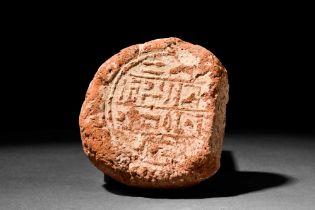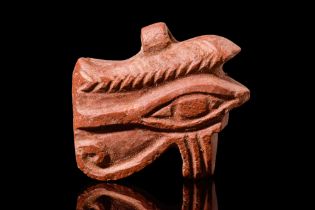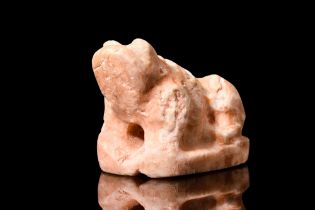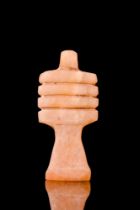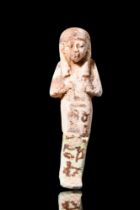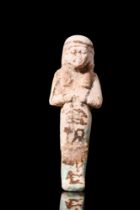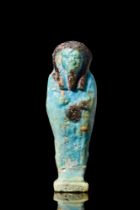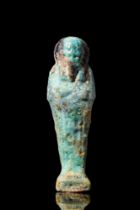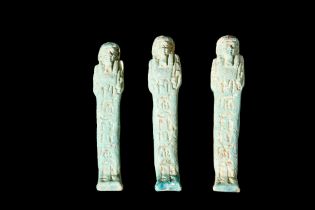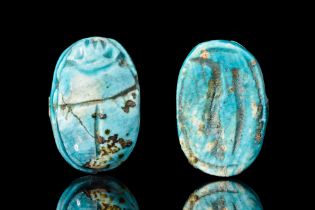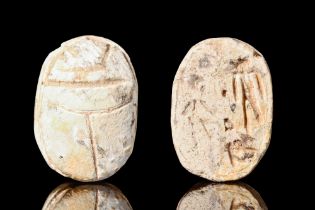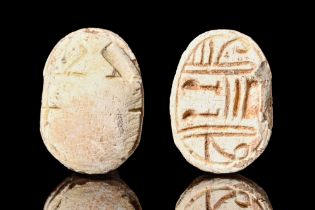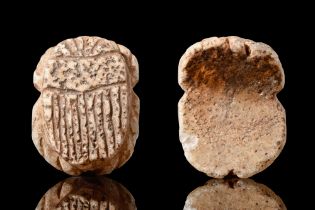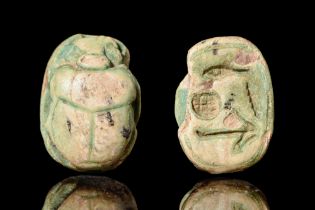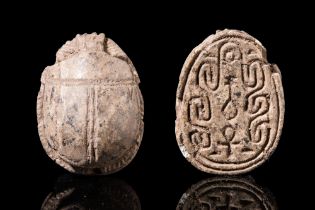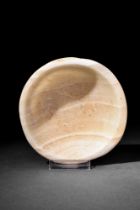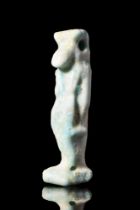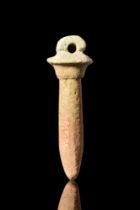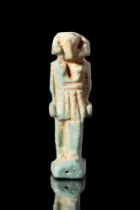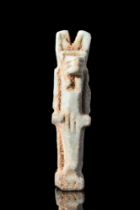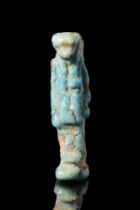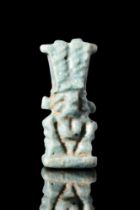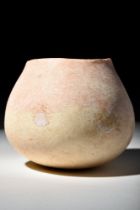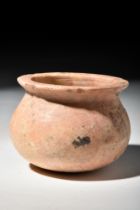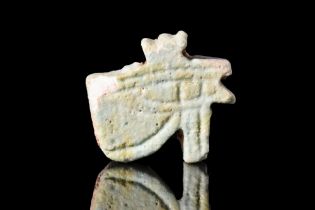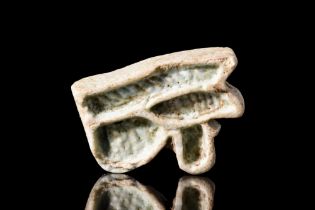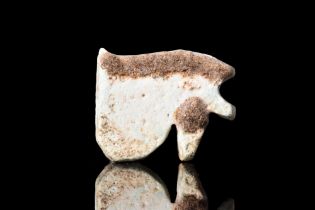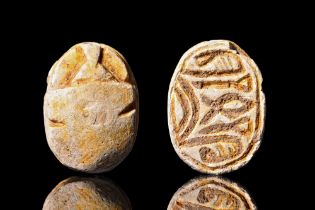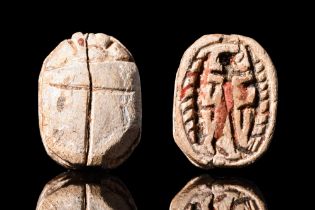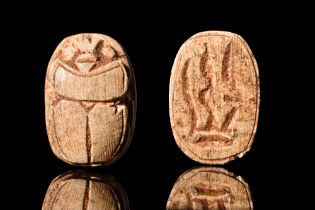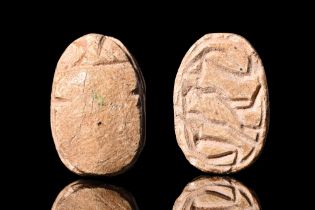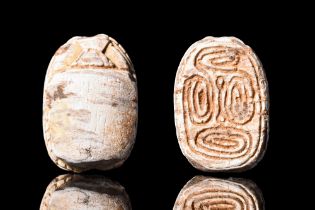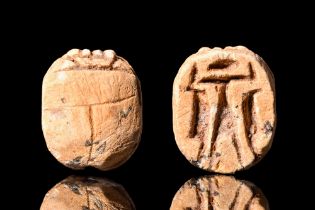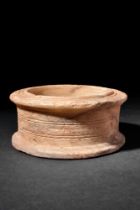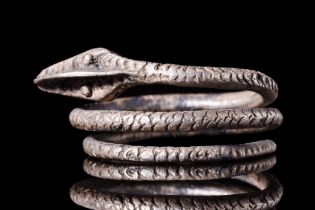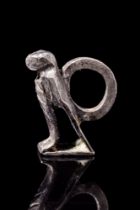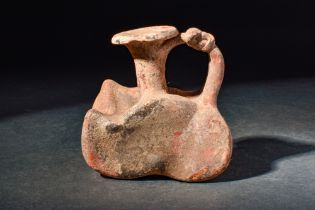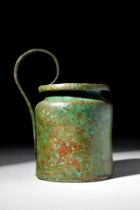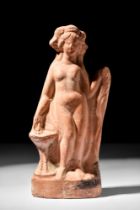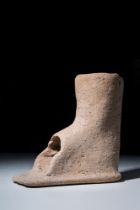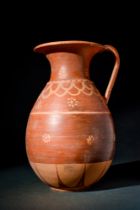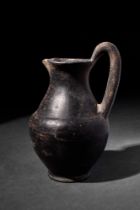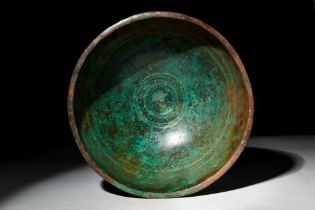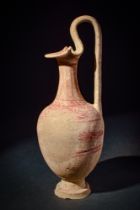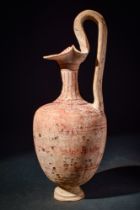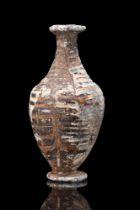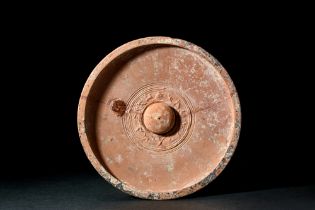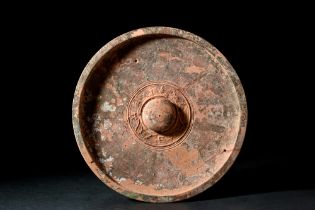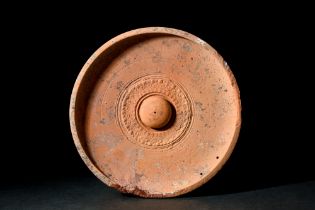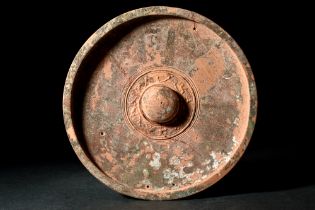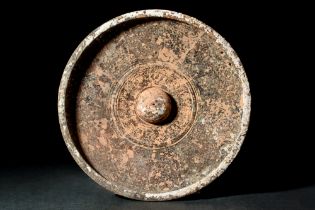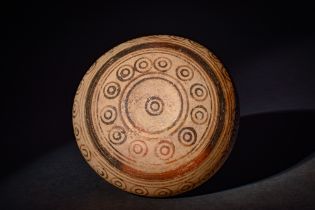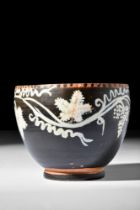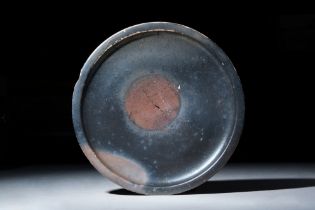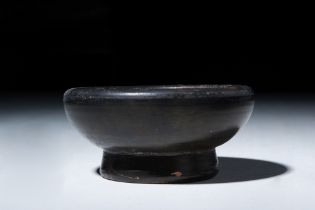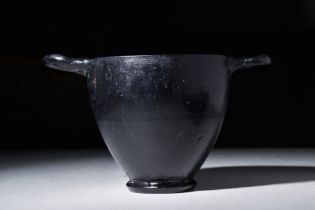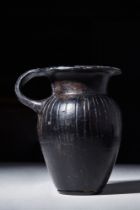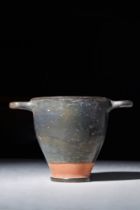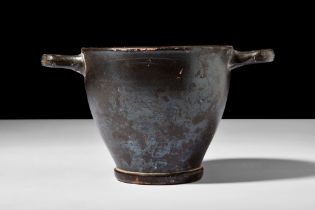Verfeinern Sie Ihre Suche
Schätzpreis
Kategorie
- Schmuck (147)
- Griechische, Römische, Ägyptische & andere Antiquitäten (83)
- Keramik, Fayencen (51)
- China (43)
- Skulpturen (36)
- Waffen, Rüstungen & Militaria (34)
- Glas & Kristall (33)
- Historische Baustoffe & Elemente (22)
- Porzellan (13)
- Varia (12)
- Metalle (11)
- Bücher, Manuskripte & Schriften (6)
- Münzen (6)
- Vintage Fashion (6)
- Islam (5)
- Großuhren (3)
- Küchenutensilien (3)
- Präparate & Naturkundliches (3)
- Russische Kunst (3)
- Sport Memorabilia & Equipment (3)
- Ethnographie & Stammeskunst (2)
- Musikinstrumente & Memorabilia (2)
- Spielzeug, Modelle & Puppen (2)
- Werkzeug (2)
- Wissenschaftliche Instrumente (2)
- Armbanduhren, Taschenuhren & Zubehör (1)
- Gemälde & Mischtechniken (1)
- Indien (1)
- Japan (1)
- Lampen (1)
- Silber & Versilbertes (1)
- Textilien (1)
Künstler / Marke
- Roman (13)
- Tang (12)
- Tang Dynasty (12)
- Greek (7)
- Han (6)
- Han Dynasty (6)
- Ming (4)
- Ming Dynasty (4)
- Western Asiatic (4)
- Luristan (3)
- Ptolemaic (3)
- Qing (2)
- Song (2)
- Zhou (2)
- Zhou Dynasty (2)
- Boss (1)
- Clarice Cliff (1)
- Eastern Wei Dynasty (1)
- Deutsch (1)
- Mesopotamian (1)
- Qajar (1)
- Qing Dynasty (1)
- Royal Crown Derby (1)
- Sasanian (1)
- Shang (1)
- Tibetan (1)
Lostyp
- Ring (78)
- Diamond (54)
- Bowl (36)
- Gold Ring (32)
- Intaglio (30)
- Band (22)
- Beads (21)
- Ohrringe (21)
- Figure (19)
- Anhänger (19)
- Amulet (17)
- Vessel (16)
- Silver Ring (14)
- Bracelet (13)
- Gericht (13)
- Ushabti (12)
- Axe (11)
- Stift (11)
- Brooch (10)
- Jug (10)
- Halskette (10)
- Schwert (10)
- Bottle (9)
- Buddha (9)
- Garnet (9)
- Glass Bottle (9)
- Grenade (9)
- Scarab (9)
- Cameo (7)
- Flask (7)
- Becher (6)
- Signet Ring (6)
- Brooches (5)
- Krater (5)
- Lampe (5)
- Mace (5)
- Round (5)
- Silver Bracelet (5)
- Skyphos (5)
- Turquoise (5)
- Figurine (4)
- Gemstone (4)
- Phiale (4)
- Plaque (4)
- Adze (3)
- Emerald (3)
- Jar (3)
- Perlen (3)
- Plate (3)
- Skulptur (3)
- Speer (3)
- Statuette (3)
- Terracotta Figure (3)
- Vase (3)
- Bangle (2)
- Bangles (2)
- Bell (2)
- Chain (2)
- Charm (2)
- Münze (2)
- Cuff (2)
- Cuff Bracelet (2)
- Cups (2)
- Drinking Cup (2)
- Gold Pendant (2)
- Kantharos (2)
- Kyathos (2)
- Olpe (2)
- Porzellan (2)
- Shabti (2)
- Amphora (1)
- Arch (1)
- Beaker (1)
- Belt buckle (1)
- Blunt (1)
- Box (1)
- British Coin (1)
- Buddha Figure (1)
- Bust (1)
- Button (1)
- Kerzeleuchter (1)
- Carving (1)
- Schatulle (1)
- Ceramic Dish (1)
- Chinese Art by Period / Style (1)
- Chinese Porcelain (1)
- Drachm (1)
- Earring (1)
- Falchion (1)
- Finial (1)
- Flares (1)
- Fragment (1)
- Glass Beaker (1)
- Glass Candlestick (1)
- Glassware (1)
- Helme (1)
- Horn (1)
- Intaglio Ring (1)
- Schlüsselring (1)
- Keys (1)
- Kelle (1)
- Brief (1)
- Feuerzeug (1)
- Mortar And Pestle (1)
- Noble (1)
- Ornament (1)
- Perfume Bottle (1)
- Pestle and Mortar (1)
- Säule (1)
- Reliquary (1)
- Ruyi (1)
- Shield (1)
- Spearhead (1)
- Tabl (1)
- Tisch (1)
- Tableware (1)
- Tetradrachm (1)
- Krawattennadel (1)
- Utensils & Kitchen Tools (1)
- Liste
- Galerie
Ein Abonnement der Preisliste ist notwendig um Ergebnisse, von Auktionen die vor einem längeren Zeitraum als 10 Tagen stattgefunden haben, ansehen zu können. Klicken Sie hier für mehr Informationen
New Kingdom, 18th Dynasty, Ca. 1353-1336 BC.A pottery funerary cone end stamped with the name of the tomb owner. These cones were employed as arch...
Ca. 664-332 BC.A finely rendered amulet depicting the Eye of Horus with a suspension loop. The Eye of Horus, also known as the Wedjat Eye, was a p...
New Kingdom, Ca. 1550-1070 BC.An alabaster amulet featuring a lifelike representation of a frog atop a flat integral base. The amphibian exhibits ...
EGYPTIAN DJED PILLAR AMULET
Ca. 664-332 BC.A Djed pillar amulet with a suspension loop. The djed pillar is the hieroglyphic symbol for 'enduring', or 'stability', and was oft...
EGYPTIAN FAIENCE USHABTI
Late to Ptolemaic Period, Ca. 664-30 BC.A charming mummiform ushabti of a light stone colour, with the characteristic blue glazed faience present ...
EGYPTIAN FAIENCE USHABTI
Third Intermediate Period, Ca.1075 - 656 BC.A lovely mummiform ushabti of a light stone colour, with the characteristic blue glazed faience remain...
EGYPTIAN FAIENCE USHABTI
Late to Ptolemaic Period, Ca. 664-30 BC.A beautiful mummiform ushabti decorated with a light blue glaze and applied black pigment on the tripartti...
EGYPTIAN FAIENCE USHABTI
Late to Ptolemaic Period, Ca. 664-30 BC.A beautiful mummiform ushabti decorated with a light blue glaze and applied black pigment on the lappet an...
Late Period, Ca. 688-332 BC.A set of three finely modelled blue-glazed faience ushabti figures in mummiform pose. Each is depicted wearing a lappe...
EGYPTIAN FAIENCE SCARAB
New Kingdom, 18th Dynasty, Ca. 1353-1336 BC.A New Kingdom blue-glazed faience scarab detailed with notches on the elytra and a dented head. The re...
EGYPTIAN STEATITE SCARAB
Hyksos Period, Ca. 1638-1530 BC.A Hyksos period steatite scarab detailed with a ridged elytra and head. The reverse is inscribed with hieroglyphs,...
EGYPTIAN STEATITE SCARAB
Hyksos Period, Ca. 1638-1530 BC.A Hyksos period steatite scarab detailed with a ridged elytra and head. The reverse is inscribed with hieroglyphs,...
EGYPTIAN STEATITE SCARAB
Late Period, Ca. 664-332 BC.An Egyptian funerary scarab finely carved from steatite. The amulet is detailed with a ribbed elytra, grooved head and...
EGYPTIAN FAIENCE SCARAB
New Kingdom, 18th Dynasty, Ca. 1353-1336 BC.A New Kingdom glazed faience scarab detailed with a ridged elytra and a dented head. The reverse is in...
EGYPTIAN STONE SCARAB
Ca. 1991-1786 BC.A stone Egyptian scarab with incised features such as the clypeus, prothorax, and elytra marked by double lines. It features inci...
EGYPTIAN ALABASTER BOWL
Old Kingdom, Ca. 3000-2345 BC.An alabaster bowl featuring a rounded base, and smooth corsetted walls that gracefully curve into an everted rim. Th...
Late Period, Ca. 664-332 BC.A glazed composition amulet of the goddess Tawaret, depicted standing with arms at her pregnant belly, on a base with ...
Late Period, Ca. 664-332 BC.An amulet formed in the shape of a papyrus column known as Wadj or papyrus sceptre. It has been crafted from a light f...
Late Period, Ca. 664-332 BC.A faience amulet of the ram-headed god, Khnum. He is depicted striding forward, with arms by his side and his fists cl...
Late Period, Ca. 664-332 BC.A faience amulet of Anubis, a god associated with death and the afterlife. He is depicted striding forward with his le...
Late Period, Ca. 664-332 BC.A glazed composition amulet of the goddess Taweret. She is depicted as a hippopotamus, complete with pendulous breasts...
Late Period, Ca. 664-332 BC.A faience amulet of the protector god Bes. He is portrayed as a nude dwarf on an integrated base. He wears a large fea...
EGYPTIAN STONE VESSEL
Ca. 3000-2000 BC.A nice jar carved from pink stone with white inclusions. The vessel sits on a rounded base, and it features a tapered shoulder an...
EGYPTIAN STONE VESSEL
Ca. 3000-2000 BC.A stone vessel, gently flaring to its rounded base. It boasts a wide mouth with an everted rim that adds an element of grace to i...
Late Period, Ca. 664-332 BC.An Eye of Horus amulet with incised linear detail and complete with suspension loop. The Eye of Horus amulet is also k...
Late Period, Ca. 664-332 BC.A glazed composition wedjat amulet, more commonly known as the Eye of Horus. The front displays linear carvings of the...
Ca. 1069-332 BC.A finely detailed ancient Egyptian blue faience udjat or wedjat eye amulet, more commonly referred to as the Eye of Horus. The amu...
EGYPTIAN STEATITE SCARAB
Ca. 1705-1690 BC.A fine example of an amulet in the shape of a scarab with features naturalistic to those of a dung beetle. The flat underside is ...
EGYPTIAN STEATITE SCARAB
20th-21st Dynasty, Ca. 1189-943 BC.A steatite scarab with naturalistic features such as a clypeus and prothorax marked by incised lines. The rever...
EGYPTIAN STEATITE SCARAB
Ca. 2055-1650 BC.A steatite scarab amulet with incised detailing to form a ridged carapace and naturalistic features. The flat underside is engrav...
EGYPTIAN STEATITE SCARAB
Ca. 1705-1690 BC.A steatite scarab with stylised incised features such as clypeus, prothorax and elytra marked by carved lines. On the reverse, th...
EGYPTIAN STEATITE SCARAB
Ca. 1740–1640 BC.A steatite scarab with an incised geometric pattern to the reverse. The moulded obverse features a detailed clypeus, head, and fo...
EGYPTIAN STEATITE SCARAB
Ca. 1705-1690 BC.A steatite scarab engraved to the reverse. The front of the scarab features a detailed head and clypeus. The wing coverings are d...
EGYPTIAN ALABASTER BOWL
Ca. 2900-2350 BC.A flat-bottomed alabaster bowl of a spool shape with outward flaring flanges around the base and the rim. The exterior is decorat...
Ca. 100 BC - AD 100.A silver ring in the form of a coiled serpent with finely detailed scales and realistic features. The serpent symbolises renew...
Egypt, Ca. 30 BC - AD 300.A silver eagle with its wings gracefully folded, resting upon an integral and flat base. Completing the amulet is a susp...
Ca. 4th century BC.A knucklebone-shaped pottery vessel with a central protruding spout with an everted rim and a short handle decorated with a kno...
ETRUSCAN BRONZE KYATHOS
Ca. 450-400 BC.A bronze kyathos of a flat-bottomed cylindrical body, gently curved shoulder, short neck and a broad, outward everted rim. The vess...
Ca. 350 BC.A salmon-coloured, moulded pottery statuette of Aphrodite. The goddess stands nude, her head adorned with a flowery wreath and her weig...
Ca. 5th-4th century BC.A large yet elegant hollow terracotta statue fragment that represents an ankle and lower shin of a figure. The sheer size o...
ETRUSCO-CORINTHIAN POTTERY OLPE
Ca. 600-500 BC.A pottery olpe of an ovoid body, gently transitioning into a funnel-shaped neck with an everted rim. The vessel is poised upon a lo...
ETRUSCAN BUCCHERO OLPE
Ca. 600 BC.A black glazed pottery olpe with a high-bellied body, flared neck, pinched-shaped mouth and arching handle. Standing on a low ring base...
ETRUSCAN BRONZE BOWL
Ca. 550 BC.A bronze bowl with a spherical body with a pronounced rim and concentric circle design. A brilliant patina enhances the surface. These ...
CORINTHIAN POTTERY ARYBALLOS
Ca. 575-550 BC.A pottery aryballos with its characteristic round body, a short neck, and a rimmed mouth. A small handle connects the mouth with th...
GREEK POTTERY TREFOIL OINOCHOE
Canosa, ca. 3rd century BC.An elegantly formed oinochoe with an inverted pear-shaped body resting on a small stemmed foot. The cylindrical neck cu...
GREEK POTTERY TREFOIL OINOCHOE
Canosa, Ca. 3rd century BC.A pottery oinochoe with a flaring trefoil rim, elongated neck, broad shoulder, egg-shaped body, and short stem foot. An...
GREEK CORE-FORMED FLASK
Ca. 2nd - 1st Century BC.A vessel with a unique form that boasts a slender and elegant body which gracefully tapers towards the base and the openi...
HELLENISTIC PHIALE WITH OMPHALOS
Ca. 4th century BC.A pottery bowl of a shallow form with a flat rim and a prominent raised central omphalos. Encircling the omphalos is a band ado...
HELLENISTIC PHIALE WITH OMPHALOS
Ca. 4th century BC.A pottery phiale of a broad and shallow form, with a central raised omphalos — a symbolic representation of the "navel" or cent...
HELLENISTIC PHIALE WITH OMPHALOS
Ca. 4th century BC.A pottery phiale of a shallow form with a flat bottom and a central roundel with a moulded low-relief decoration encircling cen...
HELLENISTIC PHIALE WITH OMPHALOS
Ca. 4th century BC.A wide and shallow bowl with a flat base and a central medallion of moulded low relief decoration encircling a raised central b...
HELLENISTIC PHIALE WITH OMPHALOS
Ca. 4th century BC.A bowl featuring a broad, shallow form with a flat base and a central medallion adorned with low relief decoration. In the cent...
HELLENISTIC POTTERY BOWL
Ca. 400 BC.A black-glazed pottery bowl of a wide body and shallow profile. The flat base and walls are decorated with a pleasant pattern composed ...
Ca. 375-300 BC.A decorated pottery bowl with a short foot and slightly convex walls. Decorated with white and ocher-painted tendrils and grapevine...
GREEK BLACK GLAZE FOOTED DISH
Ca. 4th-3rd Century BC.A glossy black glazed pottery dish characteristic of the Late Classical Attic and South Italian pottery traditions. This ve...
ATTIC BLACK GLAZE FOOTED BOWL
Ca. 4th-3rd Century BC.A well-formed Attic bowl with a lustrous black glaze characteristic of the Late Classical Attic and South Italian pottery t...
ATTIC BLACK-GLAZED SKYPHOS
Ca. 350 BC.A black slip skyphos featuring deep, curved sides, resting on a sturdy ring foot. The vessel is fitted with two equally spaced loop han...
ATTIC BLACK-GLAZED OLPE
Ca. 350 BC.A black glazed olpe featuring an inverted pear-shaped body with incised vertical grooves around the shoulder. The mug has a short cylin...
Ca. 400-300 BC.A black glazed skyphos with a tall body that slightly tapers to a ring base. The cup is fitted with two horizontal handles on oppos...
CAMPANIAN SKYPHOS
Ca. 350 BC.A black-glazed skyphos with a sleek body, opposing loop handles, and a lustrous black glaze, typical of the pottery of Magna Graecia. S...

